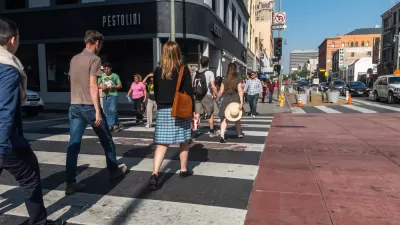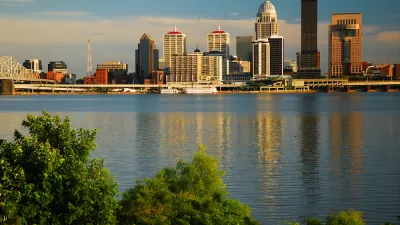Cities consistently experience higher temperatures than the surrounding countryside due to the 'heat island' effect. With global warming exacerbating these effects, cities are trying to lower local contributors to urban heat.
Not only is the entire world experiencing a rise in temperatures, but cities may be exceptionally prone to the increasing heat. The 'urban heat island' is a term used to describe the higher temperatures usually seen within large cities compared to suburban and outlying areas. "[I]f [global warming] continues, if the planet heats up 4 degrees in the coming decades, cities will heat up a blistering 8 degrees," says NPR's Richard Harris.
So what's adding to the heat island? "Cutting down trees is a big factor," finds Harris. "Pavement also stores heat during the day and makes cities hotter at night. And as cities heat up, air conditioners run harder. Their exhaust heat also pushes up the temperature."
"Trees can help more than anything else, both by providing shade and by evaporating water through their leaves," says Harris. Greg Levine, with the non-profit Trees Atlanta, says a thick canopy of trees can easily drop air temperature by 20 or 30 degrees, compared with a paved parking lot. Yet, even in Atlanta, it would take "millions" of trees to combat that city's heat island.
FULL STORY: As Temps Rise, Cities Combat 'Heat Island' Effect

Alabama: Trump Terminates Settlements for Black Communities Harmed By Raw Sewage
Trump deemed the landmark civil rights agreement “illegal DEI and environmental justice policy.”

Planetizen Federal Action Tracker
A weekly monitor of how Trump’s orders and actions are impacting planners and planning in America.

The 120 Year Old Tiny Home Villages That Sheltered San Francisco’s Earthquake Refugees
More than a century ago, San Francisco mobilized to house thousands of residents displaced by the 1906 earthquake. Could their strategy offer a model for the present?

In Both Crashes and Crime, Public Transportation is Far Safer than Driving
Contrary to popular assumptions, public transportation has far lower crash and crime rates than automobile travel. For safer communities, improve and encourage transit travel.

Report: Zoning Reforms Should Complement Nashville’s Ambitious Transit Plan
Without reform, restrictive zoning codes will limit the impact of the city’s planned transit expansion and could exclude some of the residents who depend on transit the most.

Judge Orders Release of Frozen IRA, IIJA Funding
The decision is a victory for environmental groups who charged that freezing funds for critical infrastructure and disaster response programs caused “real and irreparable harm” to communities.
Urban Design for Planners 1: Software Tools
This six-course series explores essential urban design concepts using open source software and equips planners with the tools they need to participate fully in the urban design process.
Planning for Universal Design
Learn the tools for implementing Universal Design in planning regulations.
Clanton & Associates, Inc.
Jessamine County Fiscal Court
Institute for Housing and Urban Development Studies (IHS)
City of Grandview
Harvard GSD Executive Education
Toledo-Lucas County Plan Commissions
Salt Lake City
NYU Wagner Graduate School of Public Service




























